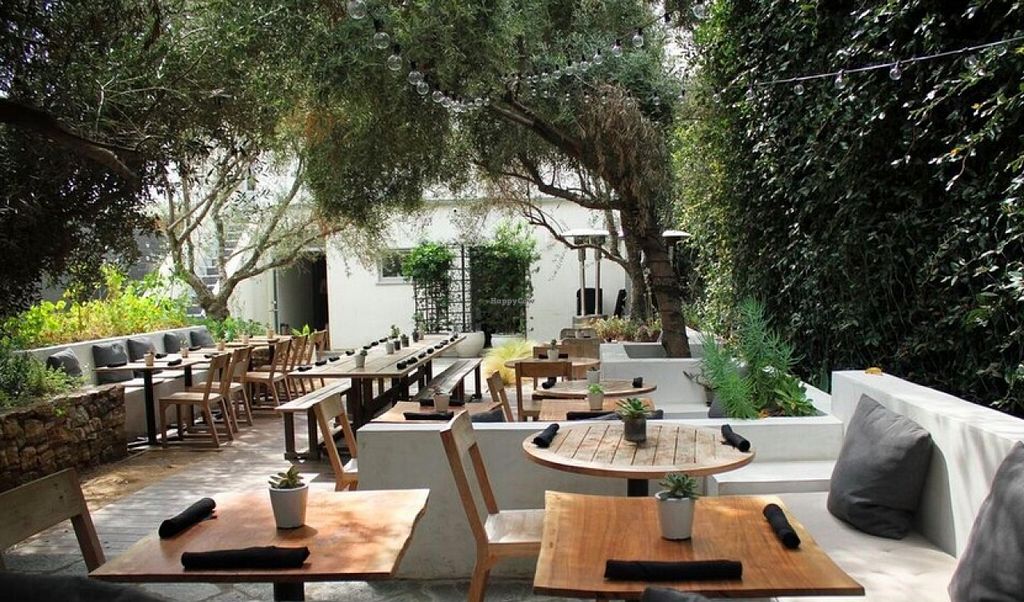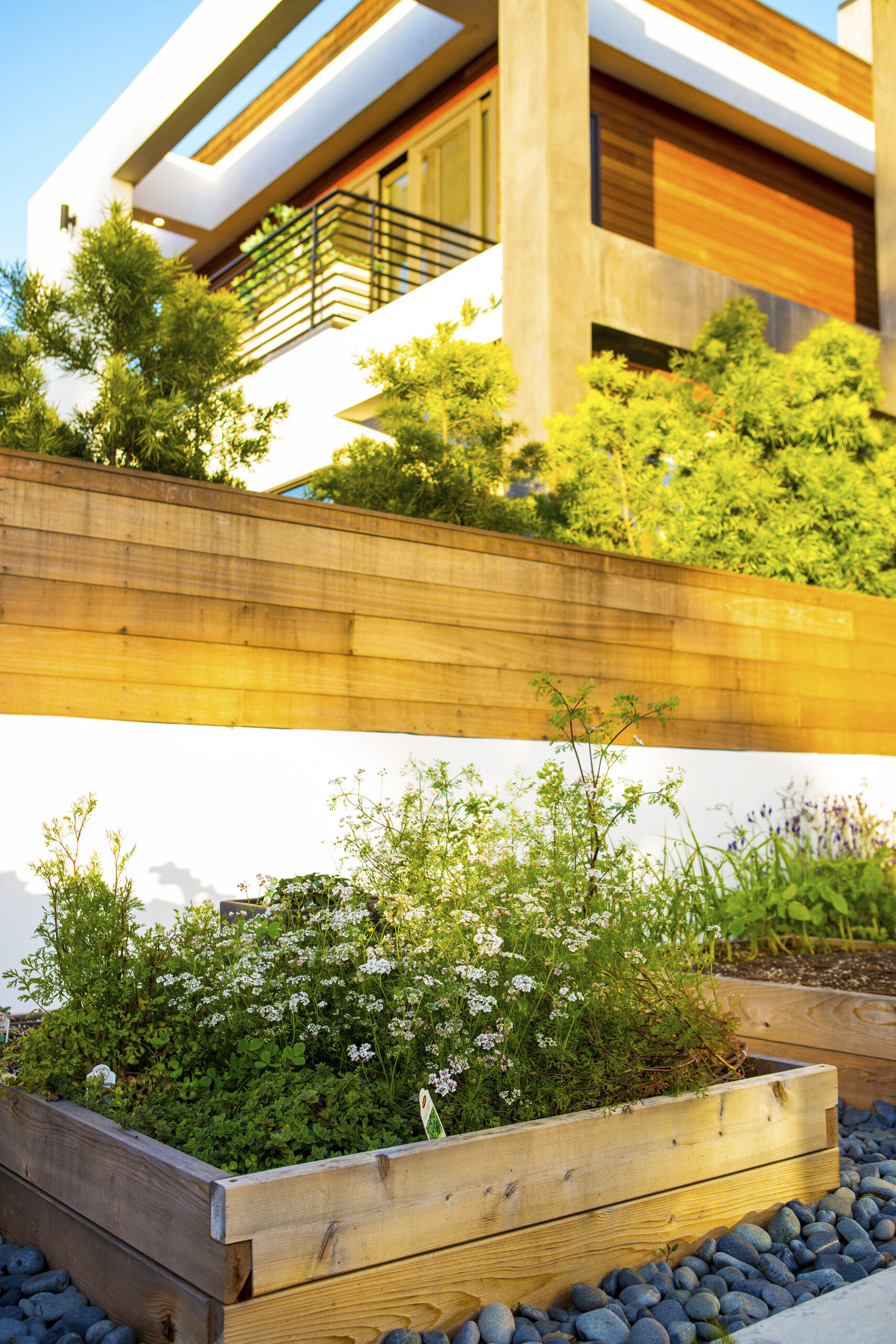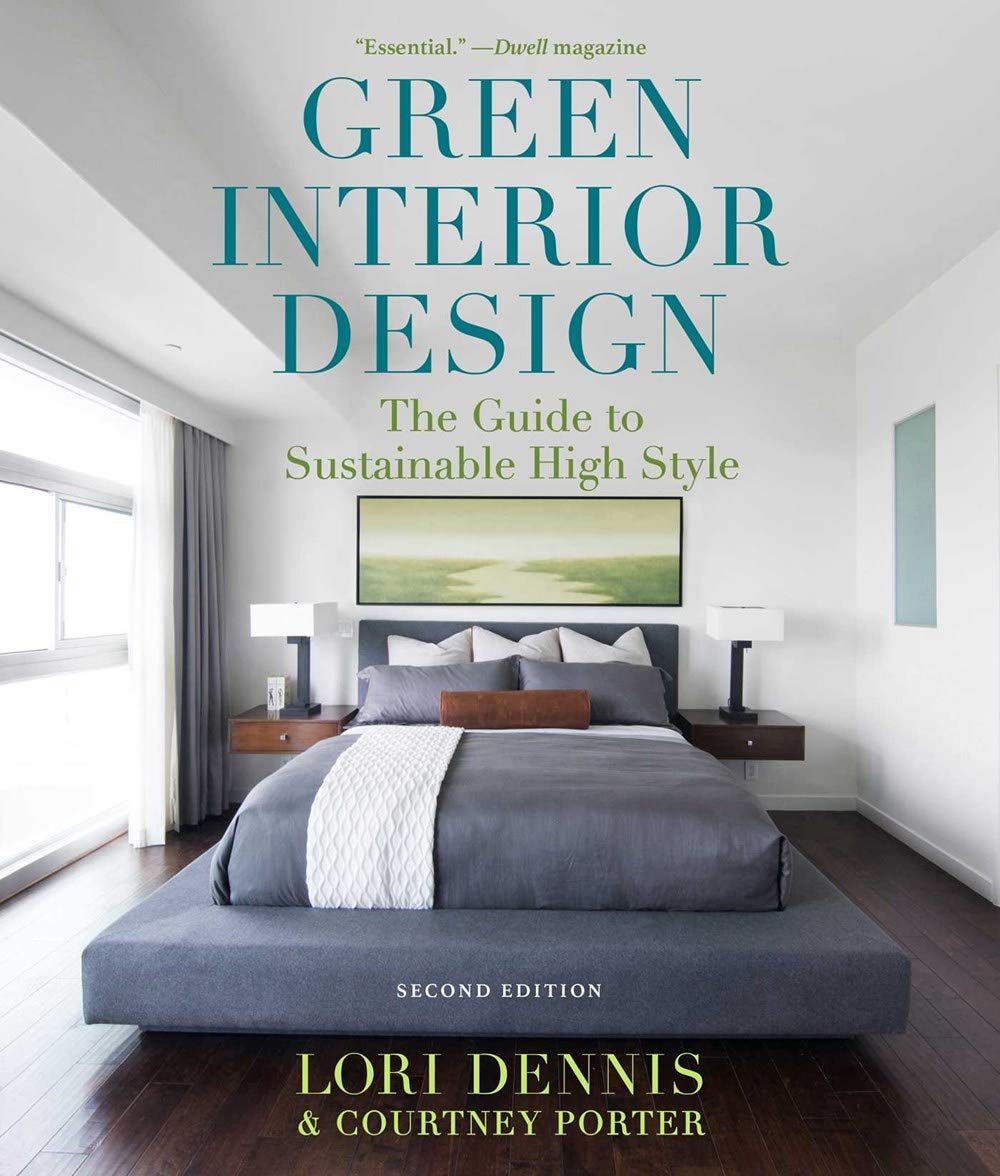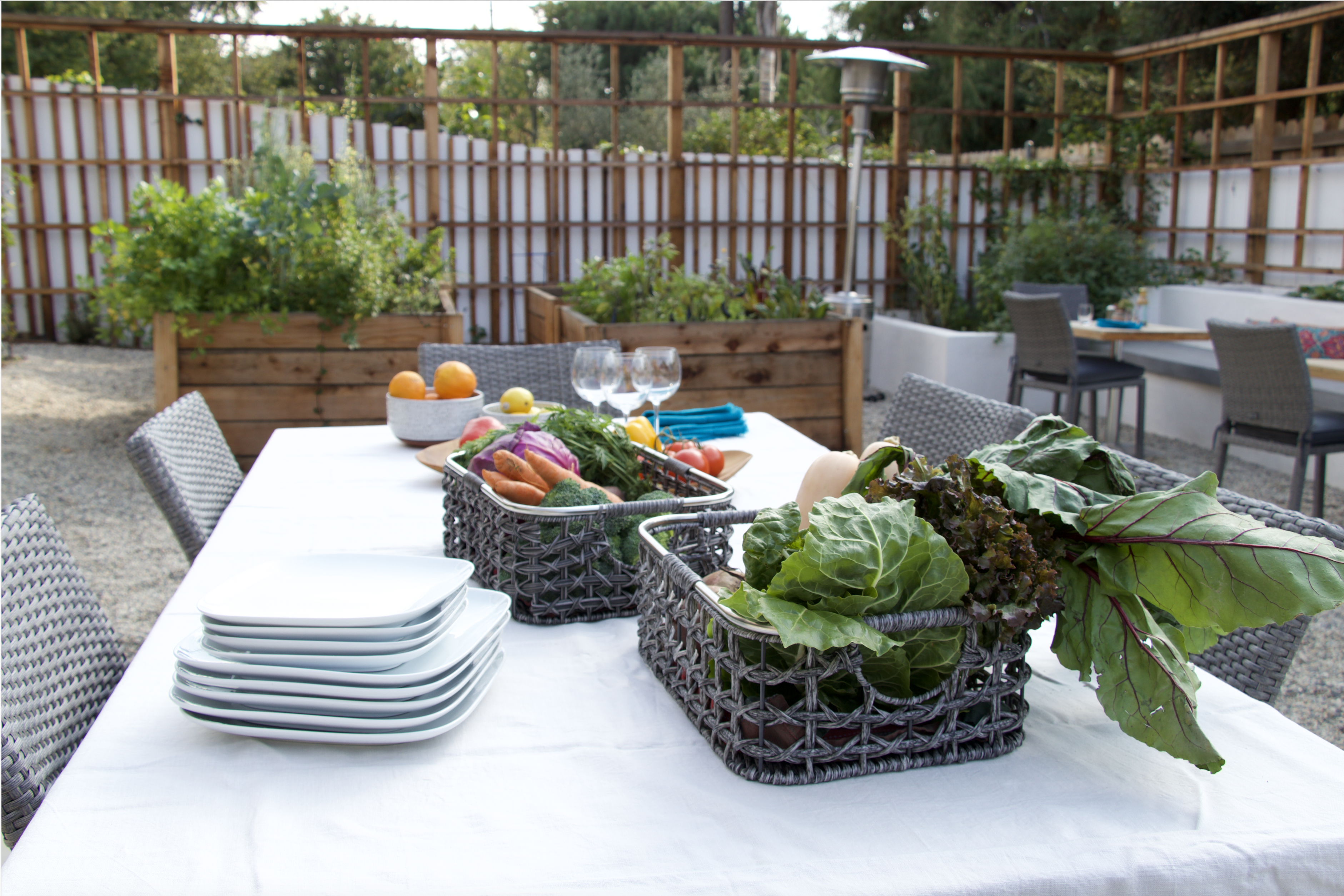
In the Backyard Home + Edible Garden of Forks Over Knives Founders
HOW TO DESIGN A BEAUTIFUL EDIBLE GARDEN
WHERE SHOULD I MAKE AN EDIBLE GARDEN?
Although we tend to think of our home’s outdoor spaces mostly as a place to lounge, eat and retreat, look at it as an opportunity to maximize your backyard, patio, courtyard, or even your front yard.
WHY SHOULD WE MAKE AN EDIBLE GARDEN?
By now, even urban dwellers are growing their own lettuce, tomatoes, and peas in pots on rooftops, in sun-filled spaces, and in front yards. If you’re an organic produce eater like us, you know it is the freshest, most nutritious food you will ever eat. And if you need a little more convincing, check out our Top 3 Reasons to Consider Going Plant-Based.
Plus, the time you spend gardening gets you outside, which means you’re not using your home’s utilities. The big bonus for the environment is that the food you grow doesn’t cause any pollution in transportation. We also hope that someone who is going to eat their own produce may be a bit less liberal with the toxic chemicals on it.
Image via Gardenista
LANDSCAPE DESIGN
How Do You Plan an Edible Landscape?
Let’s start with where you plan to have your garden. Walk around your home to spot any unused spaces that have room for a box or two. Great locations include the pathway to your front door, a portion of your backyard, or the entire open land.
LAYOUT
You’ll want to make sure you’re able to access all the edible plants. When planning the layout, make sure to allow for about a 24″ pathway in order to walk through the garden and reach each marked plant. Now you’ll know how much space you’ll have for the garden containers – which could be against a wall, terraced up or down a hill, or floating in the open.
STYLE
We recommend the style of your edible landscape to mirror the style of the home. Allow for the architecture to dictate the look and layout. If your house is more modern, consider keeping the pathways and containers in a straight grid or geometric layout. And if your home is more casual, a meandering organic flow will suit the style beautifully.
Using Natural Materials Like Wood, Stone, Plastered Cement or Metal
Create an Organic Feel for Any Edible Landscape Design.
Outdoor Dining at Venice Restaurant, Plant Food & Wine.
We love the way restaurant Plant Food and Wine incorporates dining next to the garden that provides meals for the guests. Stone and white plaster finished walls hold the herbs and vegetables, while wood seating softens and warms the space. Giant olive trees for shade and a string of bistro lights add to the ambiance of outdoor dining.
Image via Arana Craftsman
PLANT BY HEIGHT WITH THE STEP SYSTEM: HIGH – LOW – FLOW
The best looking gardens in any size are designed with layered and intentional planting. Start in the back with plants that will grow tall. Then fill in the box with crops that are short and full, followed by cascading herbs or vegetables up front.
Image via Kriste Michelini, Gardenista
Raised Bed Edged and Supported in White Stone. Image via Land studio East

5 Gallon Clay Pot Contains a Good Handful of Vegetables

Raised Bed Front Yard Garden Made with Pavers, filled with Strawberries + Tomatoes
Our Venice Art House Project
Edible Landscapes
AG Week
TYPES OF CROPS
WHAT ARE THE BEST CROPS TO PLANT AN EDIBLE GARDEN?
The easiest and most obvious answer is plant what you know you’ll eat. More than just a vegetable garden, you can add things like fruit, herbs and complimentary plants.
Here’s a quick list of some of our favorite and easy to grow crops:
- Fruit Trees like Fig, Apple, Peach, Pear, Meyer Lemon and Lime
- Salad Greens like Lettuce, Kale, Spinach and Chard
- Fruit like Blueberries, Strawberries, Raspberries and Blackberries
- Tomatoes
- Beans
- Peppers
- Zucchini
- Artichoke are absolutely beautiful
- Eggplant
- Onions, Garlic, Chives
- Herbs like Rosemary, Mint, Thyme, Sage, Parsley and Oregano
Kale | Farmer’s Almanac
Fig Tree | Gardener’s Path
PLANT HERBS, CROPS + FLOWERS TOGETHER
When planting, consider blending your edible garden with other plant species that contain berries, flowers (nectar), and seeds, as they will encourage wildlife like butterflies, honeybees, and hummingbirds to visit the garden.
If you’re planting an herb garden, make sure it is close to the Kitchen so the herbs will be readily available when you need them. You’ll be so happy you did!
Top 10 Fragrant Plants + Herbs:
- Mint
- Basil
- Rosemary
- Geranium
- Golden Leaved Pineapple Sage
- Butterfly Bush
- Sweetspire
- Lilac
- Hyacinth
- Honeysuckle
GO GREEN: BE DIVERSE + STAY NATIVE
Planting indigenous, regional plants requires a lot less environmental burden. These types of plants tend to need little, if no, chemical pesticides or herbicides because they have adapted to their climate and soil conditions. The occasional compost and beneficial insects are about the only booster shot needed for native plants to flourish.
Native flower varieties can be planted in cutting gardens as a simple, convenient alternative to buying chemical-laden, store-bought flowers.
Not to mention, mint smells incredible when you catch it in a breeze. It grows like a weed, so you’ll have plenty to add to water, tea or watermelon salad.
Loaded with tons of health benefits, Alfalfa is a prized super food that is loaded with vitamins and minerals, and is said to help reduce cholesterol.
Often considered the work horse of complimentary garden plants, Sweet Alyssum will help your crops to grow a more productive landscape. Work smarter not harder, if ya know what I mean.
In addition, aphids will dine on the nasturtium petals instead of the fruit trees.
Front Yard Garden Strategy
How to Deter Unwanted Bandits from Stealing Ripe Fruit:
I was walking around a neighborhood the other day and loved what a neighbor had done with their front yard fruit trees. To educate passers by, she hung a white paper from each tree as a note from “The Tree’s Mommy.” It talks about what type of fruit tree it is and how long it takes to grow fruit, etc.
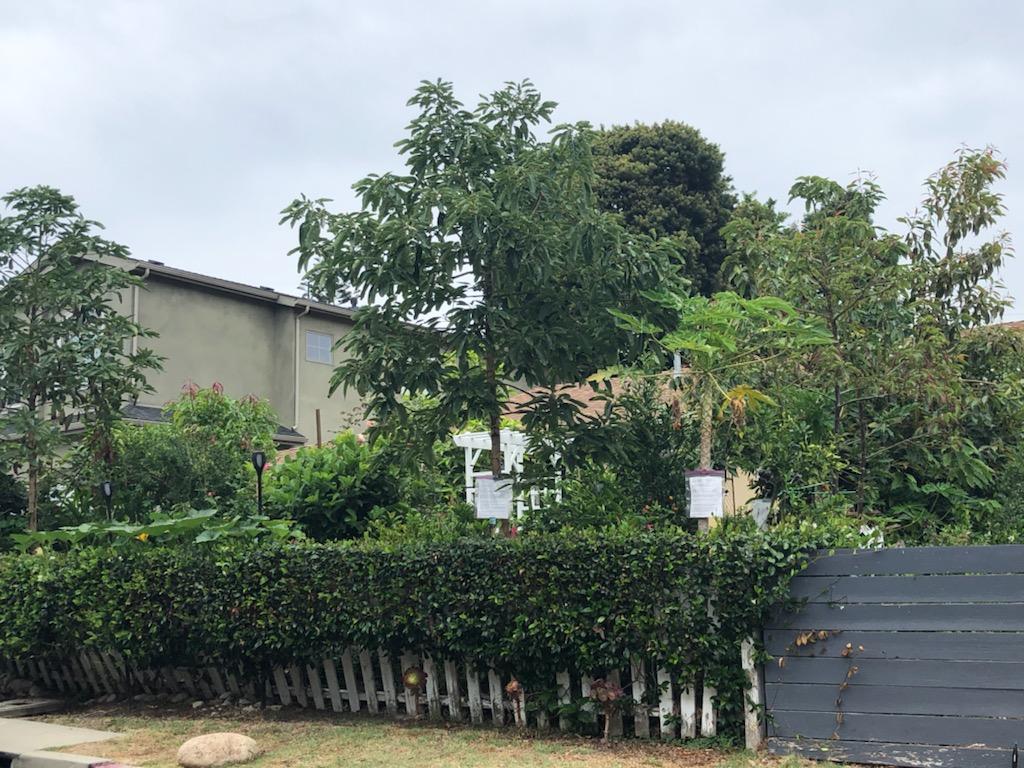
about the fruit and labor that goes into growing.
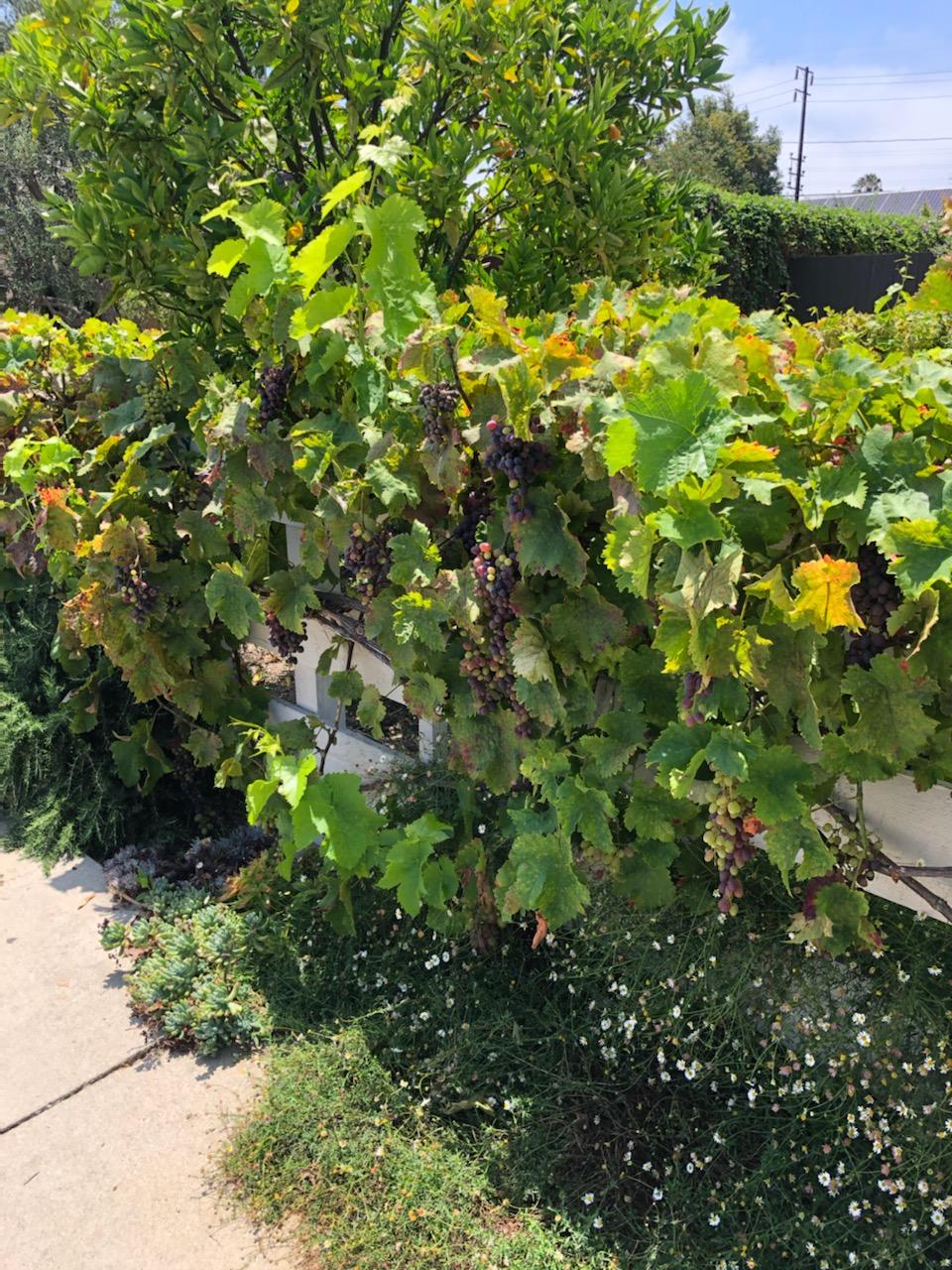
Incorporate Seating Into Your Landscape Design

The aesthetic of the home has an open design plan connecting the Dining and Living Room areas to the Kitchen and the Backyard. With edible landscape gardens in both the front and backyards, we included an potted herb lined walkway, built-in garden containers and seating covered in plaster and wood, and casual dining areas throughout.
At home, in the Kitchen of Forks Over Knives Founders.
See more photos of this fantastic outdoor edible garden and chef’s Kitchen HERE.
How to Achieve Style and Sustainability
Green Interior Design is the most comprehensive guide to sustainable building, designing, and decorating on the market.
This beautifully illustrated guide covers every detail of your home, from the drywall to the finial on the curtain rod. Plus how to find the most environmentally friendly versions of products and décor.
This second edition of Green Interior Design is meant as much for the budget DIYer as it is for the luxury homebuilders looking to dip their toes into sustainability.
Pick up your copy here, or your favorite local community bookstore.
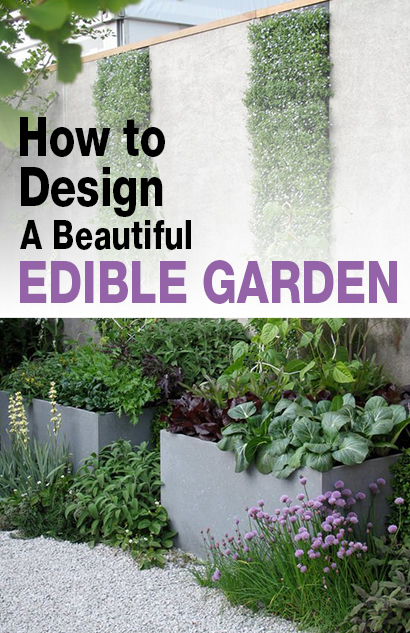
HOW TO DESIGN A BEAUTIFUL EDIBLE GARDEN | by Sara Plaisted
With Exerpts Taken from the book, Green Interior Design


